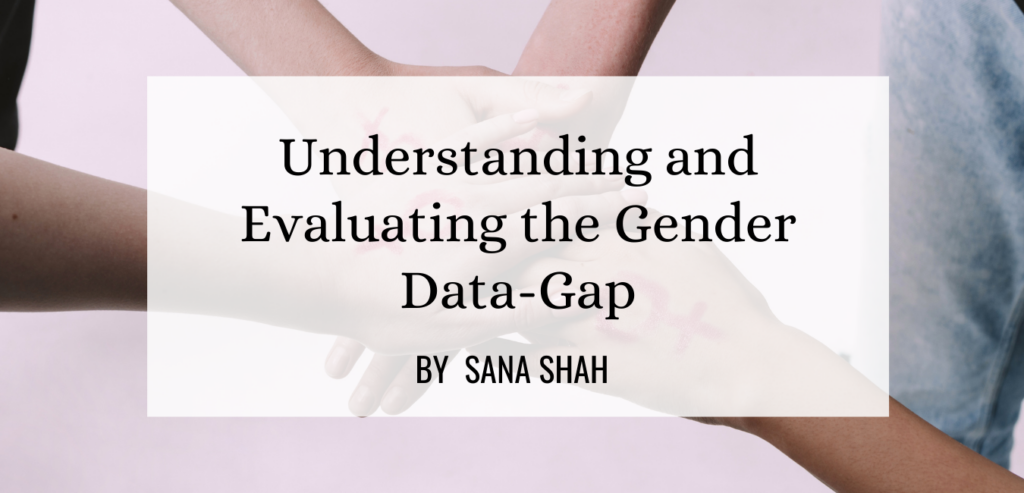Has it ever occurred to you, as a woman, while walking in the office space with a working air conditioner, that the temperature felt a bit cold, while it was alright for men? The temperature by default was set way back in the 1970s with men’s physiology as the reference point. Has it ever occurred to you that dresses that are designed for women often come without a helping pocket?
When debates around feminism do rounds of the globe, the term called ‘gender-equality’ is often “employed”, without being followed up by gender-justice. Thus, while gender-equality sounds appealing, the right question to ask would be what does the term gender-equality really entail when the structures of working are already designed highly in favour of men? Any attempts therefore at equality alone will be misguided on account of its inability to take note of the hidden biases within the structure of patriarchy within which our social order is dominantly placed. What then appears in the guise of gender-neutrality therefore is nothing but a system by default designed to work better for men.
Caroline Perez argues in the very opening of her well researched work The Invisible Women: “Most of the recorded human history is that of one big data-gap.” Therefore, from the area of the public toilets to the size of the smartphones are by default designed in favour of men. While there are languages that are grammatically gendered, world’s fastest growing language is the emoji and studies show that women are its heaviest users – however this emoji characteristically till 2016 was a male! The male bias, needless to mention, seeps into our textbooks and our pedagogy. As a simple example, the writers we read in our books will be male, and there will be a separate chapter on “women writers” enlisting some four to six writers who made it in the man’s world as if only those are all we have as women writers!
It is ironical at best to say that when it comes to the task of regulating women’s bodies, movement and sexuality, the woman suddenly becomes visible to the eyes of the world; however, when it comes to collecting and incorporating data around women, their needs, the mundane- they are rendered invisible to the same eyes! The facts that so far have thus been presented as objective to us, are in fact blatant lies loaded with heavy male bias, fuelling the myth of male universality.
DEFINING THE GENDER DATA-GAP
The cars we drive, the size and adjustment of the seatbelts, the distance of the pedals, the size of our pockets, the working of meritocracy to the representation of women on the interview panel – you name it and the gender-data gap pops its head instantly. However, what is gender-data? To be precise, Gender Data is commonly referred to as data disaggregated by sex, which reflects gender issues, questions and concerns related to all aspects of women’s and men’s lives, including their specific needs, opportunities, and contributions to society. Now then, having made a set of points, the question arises – what then is gender data-gap? To put it simply, it means that the lives of men and experiences emanating thereof, have been taken to represent those of humans overall. The entire culture, be it our history, the stories, theatre, art, medicine, economy, politics, science and planning, are but a reflection of that data gap which has inevitably resulted in a world designed for men. A world which is bias towards men.
This data-gap has been something that the women have been made accustomed to, while navigating the world, from the private spaces to the public places. However, that in no sense shall make us undermine the consequences of this silence over the data for almost half of the population of the world, for this data-gap does not come without its consequences. The consequences which are not only fatal but also life threatening in so many ways.
Further, this gender-data gap ideally should have received urgent attention, more than ever before, with the emerging context driven by the big data and use of Artificial Intelligence (AI) as the guide for our world. The gender-data gap in this case could translate and does translate into gaps in the algorithms.
THE QUESTION OF FAIR REPRESENTATION
The gap, however, is not even half of the story. If data is another word for information, human experience is also a source of information. Therefore, failing to include women’s perspective, which comes to pass itself as gender-neutral, is in fact the recipe of intended or unintended design biased towards men.
It will not be far-fetched to claim that the reason for such gender-data gap can also emanate from the idea of representation as that pointed by Simone De Beauvoir. The idea is that men have confused their own point of view with the absolute truth. There are issues, be it the female body, women’s unpaid care burden or the male violence against women that have always warranted serious discussions but have often been overlooked and deemed unimportant.
The women thus happen to be perceived, not as the other sex but as the ‘second sex’ as Beauvoir had put it ages ago. Women are seen not as autonomous beings, but as beings in relation to men. Men’s experience is taken as the universal parameter to design the world for both men and women.
IMPLICATIONS OF GENDER DATA-GAP
Women are more likely than men to use public transport and the travel patterns of women are likely to be more difficult than men. Women travel to drop kids to school, for work, for taking a relative to the doctor, for grocery shopping on the way home, with majority of pedestrians being women. It is unlikely that the policies around travel and transport would take into account these disparities and as a result the world of transport, be it the peak hours, the metro timings, the crowded station or design of vehicles comes out as biased towards men. This bias translates into government spending and also infrastructural limitations in city planning. The Nirbhaya Rape case was a case in point, where gender-data gap resulted into a disaster.
Further, planning basis, like zoning laws prioritise the needs of a bread-winning, heterosexual male and home is seen as a place of return for relaxations. However, such laws forget to take into account the unpaid care work done by women at home for whom home in the evening hours too is not a haven for rest or relaxation, but double work. When planners fail to take into account women’s need, public spaces too become men’s spaces by default.
When speaking of work, it is important to bust the myth of meritocracy in the corporates, where there are men in majority on the interview panel and thus women candidates receive negative personality criticism, which is nearly non existent when it comes to male candidates, as per another study. Similarly, in the world of academia, students for emotional issues are likely to turn to a female professor, and thus the unpaid workload inside the workplace.
At this point, one also needs to go into the history of programming as a job which was considered as a low-skilled clerical job, until one day, a team of six women ended up designing the ENIAC, the world’s first fully functional digital computer, in 1946. What happens next is that, owing to brilliance bias, industry leaders started training men for the same with developing hiring tools that were covertly biased against women!
THE AFTERMATH OF ECONOMIC POLICIES
Let us talk about the economy now. The simple question to ask would be- is the impact of economic policies of a government same for both men and women, or are there differential implications? As an example, in economic crisis, when the government decides to opt for austerity measures, the services provided earlier do not run out of demand overnight or become non-existent. Those services are actually shifted onto the women. As governments take measures to estimate unpaid care work in economic terms, in reality we only have an estimate and the data on actual contribution of care work to these nation’s GDP goes unaccounted for.
There have been committees suggesting to include the same, however, those suggestions were turned down with the reason given that the data collection to such large extend was very difficult. Such reasoning defeats the very purpose of data collection, for what is the use of data for humanity, when the data is actually incomplete and talks only for half the population.
The same holds true for our politics, wherein women face more hostile environment than men and the working of democracy is not a level playing field but is biased against electing women. The practice of excluding women from decision-making is widespread and you won’t need any more than a glance at the TV screen telecasting the snippets of any meeting to count the number of men sitting round the table compared to the number of women in the same room.
Failing to collect data on women and their lives would mean that we continue to naturalise sex and gender discrimination- while at the same time somehow not seeing any of this as discrimination. Hence making sure that data represents the lived reality of women and girls in all their diversity by addressing deep-seated biases in concepts, definitions, classifications, and methodologies, is essential to making women and girls visible.
In India, as another example, the government ran huge campaigns to build or encourage the construction of toilets where there were none and the women had to go to a nearby field. However, in India women make 91% of the workers working in the informal economy and then the question arises as to how many public toilets are there at the workplace- where would these women go during the day then? From lack of better public sanitary facilities for women to the lack of data on the same, gender-data gap is touching new heights. In addition to that, large scale data for the prevalence of something as serious as sexual harassment is lacking too! Add to that the problematic maternity and paternity leave provisions in many countries and thus the unfair distribution of care work.
In an ideal world, the 2019 SDG Gender Index would cover all the world’s countries, that is in fact a doable expectation from world’s significant human rights organisations and even on that front the data is incomplete.
CLOSING REMARKS
As the world battles another pandemic, COVID19, the post-pandemic relief efforts, if repeating the mistakes of past, where in women had to suffer the worst in such times, be it Boxing Day Tsunami, Hurricane Andrew or the recent Hurricane Katrina, it will clearly accentuate the rationale that this gender-data gap is a function of sexism, “a symptom of a world that believes women’s lives are less important than ‘human’ lives, where ‘human’ means male”. In times of war, conflicts, natural disaster, pandemics- all the usual data gaps, seen from urban planning to medical care are magnified and multiplied. While women have been solution-providers, not heeding them means losing out the chance of incorporating diverse opinions and better solutions to the problems.

